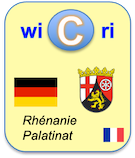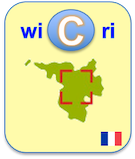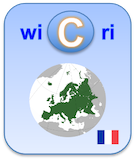Polyommatus icarus butterflies in the British Isles: evidence for a bottleneck
Identifieur interne : 000785 ( Main/Merge ); précédent : 000784; suivant : 000786Polyommatus icarus butterflies in the British Isles: evidence for a bottleneck
Auteurs : Rien De Keyser [Royaume-Uni] ; Tim G. Shreeve [Royaume-Uni] ; Casper J. Breuker [Royaume-Uni] ; Rosemary S. Hails [Royaume-Uni] ; Thomas Schmitt [Allemagne]Source :
- Biological Journal of the Linnean Society [ 0024-4066 ] ; 2012-09.
English descriptors
- KwdEn :
Abstract
Phylogeographical research has revealed several paradigm patterns of postglacial range expansion from the Mediterranean peninsulas to more northern parts of Europe. These range expansions have consequences for the genetic constitution of populations. Although many studies have been performed in mainland Europe, the colonization history of the British Isles is relatively poorly studied; the genetic consequences of the last glacial readvances and the climate optimum conditions, as well as the implications of the recent climatic conditions on the population genetic structures, are little understood. Therefore, we selected the common blue butterfly Polyommatus icarus as a model species for understanding more generally the colonization patterns of the British Isles and the genetic dynamics on these islands. Allozyme analyses of this butterfly show a rather high genetic diversity over continental Europe without major genetic differentiation. The situation on the British Isles is completely different. Here, populations show a much lower genetic diversity compared to mainland Europe. The genetic constitution is well differentiated from that observed on the European mainland, and the genetic differentiation among populations in Britain is stronger than at the European scale. These results support the hypothesis that a relatively cold‐tolerant species such as the common blue could have colonized the British Isles early during the late glacial period and survived the last glacial readvances in small refugia in the South. The retraction of this species in small isolated populations could have caused the genetic impoverishment found. The subsequent forest climax during the climate optimum possibly restricted further expansion of this early succession species to small pockets all over the British Isles, resulting in the genetic patchwork that is still observed. Additionally, the relatively cool and rainy conditions one these islands might have caused bottlenecks, possibly enforcing these genetic patterns. © 2012 The Linnean Society of London, Biological Journal of the Linnean Society, 2012, ••, ••–••.
Url:
DOI: 10.1111/j.1095-8312.2012.01925.x
Links toward previous steps (curation, corpus...)
- to stream Istex, to step Corpus: 001970
- to stream Istex, to step Curation: 001854
- to stream Istex, to step Checkpoint: 000084
Links to Exploration step
ISTEX:2122DDCF17FB3A342EA7F4C987A6FCC36E518193Le document en format XML
<record><TEI wicri:istexFullTextTei="biblStruct"><teiHeader><fileDesc><titleStmt><title xml:lang="en">Polyommatus icarus butterflies in the British Isles: evidence for a bottleneck</title><author><name sortKey="Keyser, Rien De" sort="Keyser, Rien De" uniqKey="Keyser R" first="Rien De" last="Keyser">Rien De Keyser</name></author><author><name sortKey="Shreeve, Tim G" sort="Shreeve, Tim G" uniqKey="Shreeve T" first="Tim G." last="Shreeve">Tim G. Shreeve</name></author><author><name sortKey="Breuker, Casper J" sort="Breuker, Casper J" uniqKey="Breuker C" first="Casper J." last="Breuker">Casper J. Breuker</name></author><author><name sortKey="Hails, Rosemary S" sort="Hails, Rosemary S" uniqKey="Hails R" first="Rosemary S." last="Hails">Rosemary S. Hails</name></author><author><name sortKey="Schmitt, Thomas" sort="Schmitt, Thomas" uniqKey="Schmitt T" first="Thomas" last="Schmitt">Thomas Schmitt</name></author></titleStmt><publicationStmt><idno type="wicri:source">ISTEX</idno><idno type="RBID">ISTEX:2122DDCF17FB3A342EA7F4C987A6FCC36E518193</idno><date when="2012" year="2012">2012</date><idno type="doi">10.1111/j.1095-8312.2012.01925.x</idno><idno type="url">https://api.istex.fr/document/2122DDCF17FB3A342EA7F4C987A6FCC36E518193/fulltext/pdf</idno><idno type="wicri:Area/Istex/Corpus">001970</idno><idno type="wicri:explorRef" wicri:stream="Istex" wicri:step="Corpus" wicri:corpus="ISTEX">001970</idno><idno type="wicri:Area/Istex/Curation">001854</idno><idno type="wicri:Area/Istex/Checkpoint">000084</idno><idno type="wicri:explorRef" wicri:stream="Istex" wicri:step="Checkpoint">000084</idno><idno type="wicri:doubleKey">0024-4066:2012:Keyser R:polyommatus:icarus:butterflies</idno><idno type="wicri:Area/Main/Merge">000785</idno></publicationStmt><sourceDesc><biblStruct><analytic><title level="a" type="main" xml:lang="en">Polyommatus icarus butterflies in the British Isles: evidence for a bottleneck</title><author><name sortKey="Keyser, Rien De" sort="Keyser, Rien De" uniqKey="Keyser R" first="Rien De" last="Keyser">Rien De Keyser</name><affiliation wicri:level="1"><country xml:lang="fr">Royaume-Uni</country><wicri:regionArea>Department of Biological and Medical Sciences, Faculty of Health and Life Sciences, Oxford Brookes University, Headington, Oxford OX3 0BP</wicri:regionArea><wicri:noRegion>Oxford OX3 0BP</wicri:noRegion></affiliation></author><author><name sortKey="Shreeve, Tim G" sort="Shreeve, Tim G" uniqKey="Shreeve T" first="Tim G." last="Shreeve">Tim G. Shreeve</name><affiliation wicri:level="1"><country xml:lang="fr">Royaume-Uni</country><wicri:regionArea>Department of Biological and Medical Sciences, Faculty of Health and Life Sciences, Oxford Brookes University, Headington, Oxford OX3 0BP</wicri:regionArea><wicri:noRegion>Oxford OX3 0BP</wicri:noRegion></affiliation></author><author><name sortKey="Breuker, Casper J" sort="Breuker, Casper J" uniqKey="Breuker C" first="Casper J." last="Breuker">Casper J. Breuker</name><affiliation wicri:level="1"><country xml:lang="fr">Royaume-Uni</country><wicri:regionArea>Department of Biological and Medical Sciences, Faculty of Health and Life Sciences, Oxford Brookes University, Headington, Oxford OX3 0BP</wicri:regionArea><wicri:noRegion>Oxford OX3 0BP</wicri:noRegion></affiliation></author><author><name sortKey="Hails, Rosemary S" sort="Hails, Rosemary S" uniqKey="Hails R" first="Rosemary S." last="Hails">Rosemary S. Hails</name><affiliation wicri:level="1"><country xml:lang="fr">Royaume-Uni</country><wicri:regionArea>Centre for Ecology & Hydrology, Maclean Building, Crowmarsh Gifford, Wallingford OX10 8BB</wicri:regionArea><wicri:noRegion>Wallingford OX10 8BB</wicri:noRegion></affiliation></author><author><name sortKey="Schmitt, Thomas" sort="Schmitt, Thomas" uniqKey="Schmitt T" first="Thomas" last="Schmitt">Thomas Schmitt</name><affiliation wicri:level="1"><country xml:lang="fr">Allemagne</country><wicri:regionArea>Department of Biogeography, FB VI, Trier University, D–54 286 Trier</wicri:regionArea><wicri:noRegion>D–54 286 Trier</wicri:noRegion><wicri:noRegion>D–54 286 Trier</wicri:noRegion></affiliation><affiliation wicri:level="1"><country wicri:rule="url">Allemagne</country></affiliation></author></analytic><monogr></monogr><series><title level="j">Biological Journal of the Linnean Society</title><idno type="ISSN">0024-4066</idno><idno type="eISSN">1095-8312</idno><imprint><publisher>Blackwell Publishing Ltd</publisher><pubPlace>Oxford, UK</pubPlace><date type="published" when="2012-09">2012-09</date><biblScope unit="volume">107</biblScope><biblScope unit="issue">1</biblScope><biblScope unit="page" from="123">123</biblScope><biblScope unit="page" to="136">136</biblScope></imprint><idno type="ISSN">0024-4066</idno></series><idno type="istex">2122DDCF17FB3A342EA7F4C987A6FCC36E518193</idno><idno type="DOI">10.1111/j.1095-8312.2012.01925.x</idno><idno type="ArticleID">BIJ1925</idno></biblStruct></sourceDesc><seriesStmt><idno type="ISSN">0024-4066</idno></seriesStmt></fileDesc><profileDesc><textClass><keywords scheme="KwdEn" xml:lang="en"><term>allozyme electrophoresis</term><term>biogeography</term><term>common blue</term><term>phylogeography</term><term>postglacial range expansion</term></keywords></textClass><langUsage><language ident="en">en</language></langUsage></profileDesc></teiHeader><front><div type="abstract" xml:lang="en">Phylogeographical research has revealed several paradigm patterns of postglacial range expansion from the Mediterranean peninsulas to more northern parts of Europe. These range expansions have consequences for the genetic constitution of populations. Although many studies have been performed in mainland Europe, the colonization history of the British Isles is relatively poorly studied; the genetic consequences of the last glacial readvances and the climate optimum conditions, as well as the implications of the recent climatic conditions on the population genetic structures, are little understood. Therefore, we selected the common blue butterfly Polyommatus icarus as a model species for understanding more generally the colonization patterns of the British Isles and the genetic dynamics on these islands. Allozyme analyses of this butterfly show a rather high genetic diversity over continental Europe without major genetic differentiation. The situation on the British Isles is completely different. Here, populations show a much lower genetic diversity compared to mainland Europe. The genetic constitution is well differentiated from that observed on the European mainland, and the genetic differentiation among populations in Britain is stronger than at the European scale. These results support the hypothesis that a relatively cold‐tolerant species such as the common blue could have colonized the British Isles early during the late glacial period and survived the last glacial readvances in small refugia in the South. The retraction of this species in small isolated populations could have caused the genetic impoverishment found. The subsequent forest climax during the climate optimum possibly restricted further expansion of this early succession species to small pockets all over the British Isles, resulting in the genetic patchwork that is still observed. Additionally, the relatively cool and rainy conditions one these islands might have caused bottlenecks, possibly enforcing these genetic patterns. © 2012 The Linnean Society of London, Biological Journal of the Linnean Society, 2012, ••, ••–••.</div></front></TEI></record>Pour manipuler ce document sous Unix (Dilib)
EXPLOR_STEP=$WICRI_ROOT/Wicri/Rhénanie/explor/UnivTrevesV1/Data/Main/Merge
HfdSelect -h $EXPLOR_STEP/biblio.hfd -nk 000785 | SxmlIndent | more
Ou
HfdSelect -h $EXPLOR_AREA/Data/Main/Merge/biblio.hfd -nk 000785 | SxmlIndent | more
Pour mettre un lien sur cette page dans le réseau Wicri
{{Explor lien
|wiki= Wicri/Rhénanie
|area= UnivTrevesV1
|flux= Main
|étape= Merge
|type= RBID
|clé= ISTEX:2122DDCF17FB3A342EA7F4C987A6FCC36E518193
|texte= Polyommatus icarus butterflies in the British Isles: evidence for a bottleneck
}}
|
| This area was generated with Dilib version V0.6.31. | |



